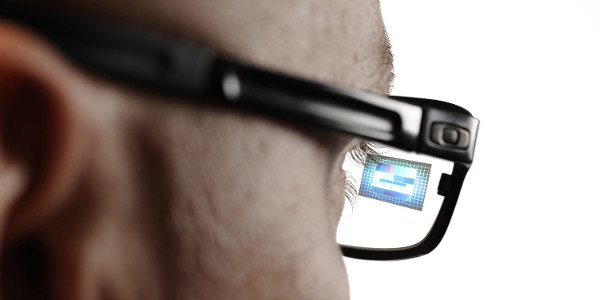
The debate around Augmented Reality and its potential is strictly connected with the wearable devices that can enable immersive experiences both for the enterprise and consumer users.
Many companies have developed their own model of smartglasses with different degrees of success and feedback from the market.
Even though these devices are becoming increasingly popular and are conquering space into our lives, there is still a lot of confusion and misconception regarding the relation between smartglasses and Augmented Reality.
What makes a pair of glasses smart?
By smartglass we mean a pair of more or less technologically advanced glasses which enable the access to contents in see through mode, by allowing the user to view digital contents on their lenses. These contents can be of a number of types, including directions, notifications from your social media accounts, barcode scanning and the visualization of 3D elements or characters.
The visualization on the lenses can be made available by means of different technological approaches, but what is common to these approaches is the way contents are placed. They can be visualized in specific areas of the lenses, without a contextual placement according to the surrounding environment.

In general Smartglasses are less advanced than AR Glasses in terms of CPU power, battery life and even additional sensors like Depth Mapping and IMU, making the user experience less immersive.
Some example of products that can be included in the category of Smartglasses are Google Glass, Intel Vaunt (just a prototype yet) and Recon Jet.
What can be defined as Augmented Reality Glasses?
The natural evolution of Smartglasses regards devices with Augmented Reality features which can in addition map the environment and anchor contents at specific areas. This is made possible thanks to the presence of one or more front facing cameras.
The most sophisticated devices of this category have depth cameras for accurate mapping, but thanks to the recent release of development kits like ARkit and ARCore, you can get a pretty accurate mapping thanks to regular cameras.

Environment mapping is crucial for certain use cases, for example showing 3D furniture inside your house, Object Recognition and Tracking with AI algorithms, manufacturing operations on machinery and a lot of other scenarios.
Additionally such devices are generally more powerful than regular Smartglasses, have longer battery life and more sensors. Some have even a dedicated AI CPU.
Different companies use different technologies to display the contents and also offer different field of views, feature that makes the user experience more or less immersive.
Some of the products that fit in this category are Microsoft Hololens, Meta 2, ODG R-7, Magic Leap and Daqri.
Conclusions: which device should you pick?
Now that we have cleared things up, it’s easier for you to pick the device that fits best for your use case. In general for use cases in which the information to display doesn’t need to be anchored to the environment you can rely on standard Smartglasses, while if you need your digital contents to be placed in a specific area of the environment you need to pick AR Smartglasses. So the main difference is how immersive the user experience will be.
For industry, architecture and interior design AR glasses are the best choice, for most of the other use cases, including turn by turn navigation, social media and messaging, standard Smartglasses will work fine.
This post is also available in: Italian
